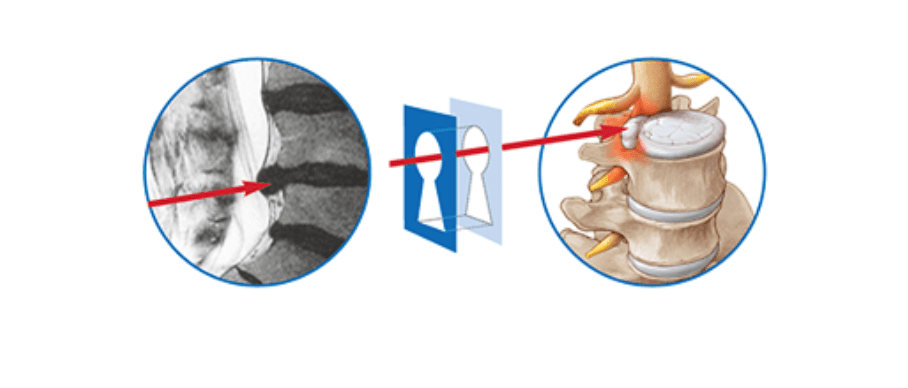What Is a Herniated Disc?
A Herniated Disc – also commonly called a ‘slipped’ or ‘bulged’ disc – refers to the spongy cushion that separates the interlocking bones of your spine. These discs function as shock absorbers and allow your spine to twist and bend. If these discs get damaged, their soft center can push through the disc wall causing the spinal disc to herniate or protrude abnormally, obstructing the nerves.
What Causes Herniated Discs?
Aging and normal wear and tear are major contributors to disc herniation. As you age, your spinal discs become less flexible and more prone to rips and tears. Heavy lifting and traumatic injury are common causes of herniated discs. Other causes include incorrect sitting, dehydration, poor diet, obesity, hereditary deformities, and weak abdominal or back muscles.
Most herniations happen in the lumbar spine (lower back area) causing the following symptoms in your legs, buttox, or feet:
- Pain
- Numbness
- Weakness
- Tingling
A herniation in your cervical spine (upper spine & neck area) can present symptoms in your neck, arms, shoulders, and hands. Regardless of your pain’s location, it’s the intensity of the pain that ultimately determines the course of action for your Herniated Disc.
How To Treat A Herniated Disc
Typically, physical therapy, injections, rest, and medication are initially attempted before surgery is even considered. Oftentimes Herniated Discs can heal on their own, but there are situations in which surgery is required.
After confirmation from an MRI or CT scan, and without improvement after several weeks of the above-mentioned therapies, your surgeon may suggest Endoscopic or Herniated Disc Surgery.
The 3 Steps of Endoscopic Disc Surgery
At The Modern Spine, we believe the best surgery is the least invasive one. That’s why we work with Joimax’s advanced endoscopic instruments to be as gentle as possible. Using the keyhole approach, a small incision of less than a few millimeters is made. Surgery can be condensed into the following three steps.

STEP 1 – ACCESS
During surgery, you’ll lie on either your stomach or your side. The surgeon’s minimal incision in your back allows for the preservation of surrounding tissue and muscle. This minimally invasive approach boasts a quicker recovery time as well as lower complications and risks of infection.
STEP 2 – REMOVAL OF THE HERNIATION
After entering the body, the surgeon uses a special endoscope to view an illuminated HD version of the working area inside the body. The herniated disc material is carefully and gently removed by using tiny forceps and other specialty instruments.
STEP 3 – REVIEW & COMPLETION
At the end of surgery, the surgeon will check to ensure that all affected nerve fibers are moving freely. The instruments are then removed and the minor incision is closed with one or two stitches. You will be back on your feet after a few hours, and back to normal activity as soon as your doctor clears you.
This minimally invasive approach to Herniated Disc Surgery has a host of benefits:
- Preservation of ligaments and muscles
- Minimal risk of infection
- Fewer scars
- Less wound and muscle pain
- Faster return to everyday activities
- Less costly procedure
The Modern Spine offers advanced care for Herniated Discs and other spine conditions. FOr more information or to discuss your Herniated Disc with our award-winning surgeon, please contact The Modern Spine Specialists at 805-370-0748 or email us at info@themodernspine.com.
You can also visit our office at:
250 Lombard Street
Thousand Oaks, CA 91360


Recent Comments